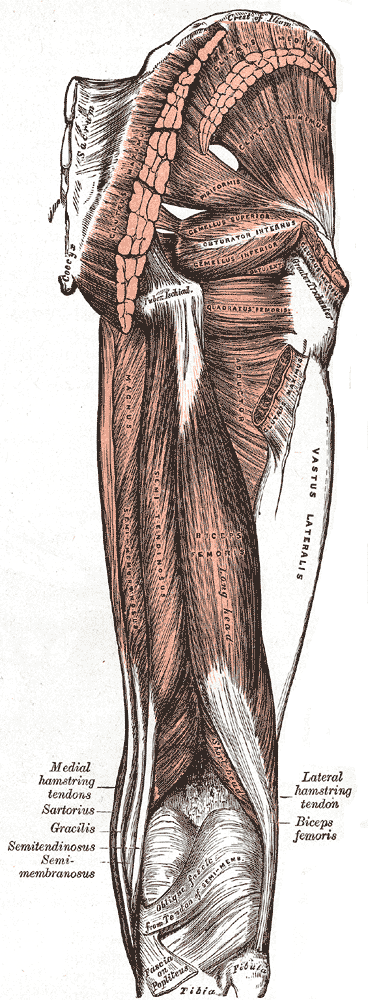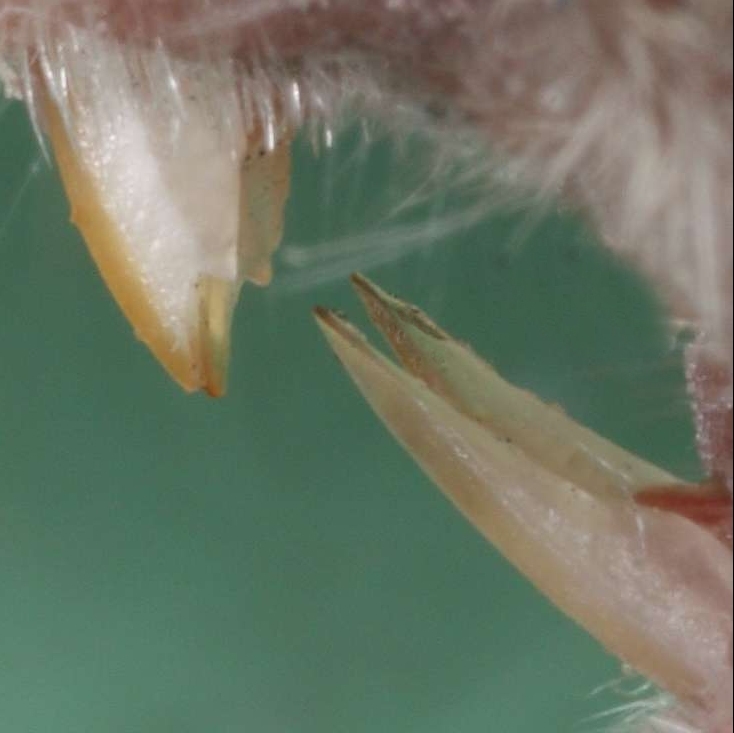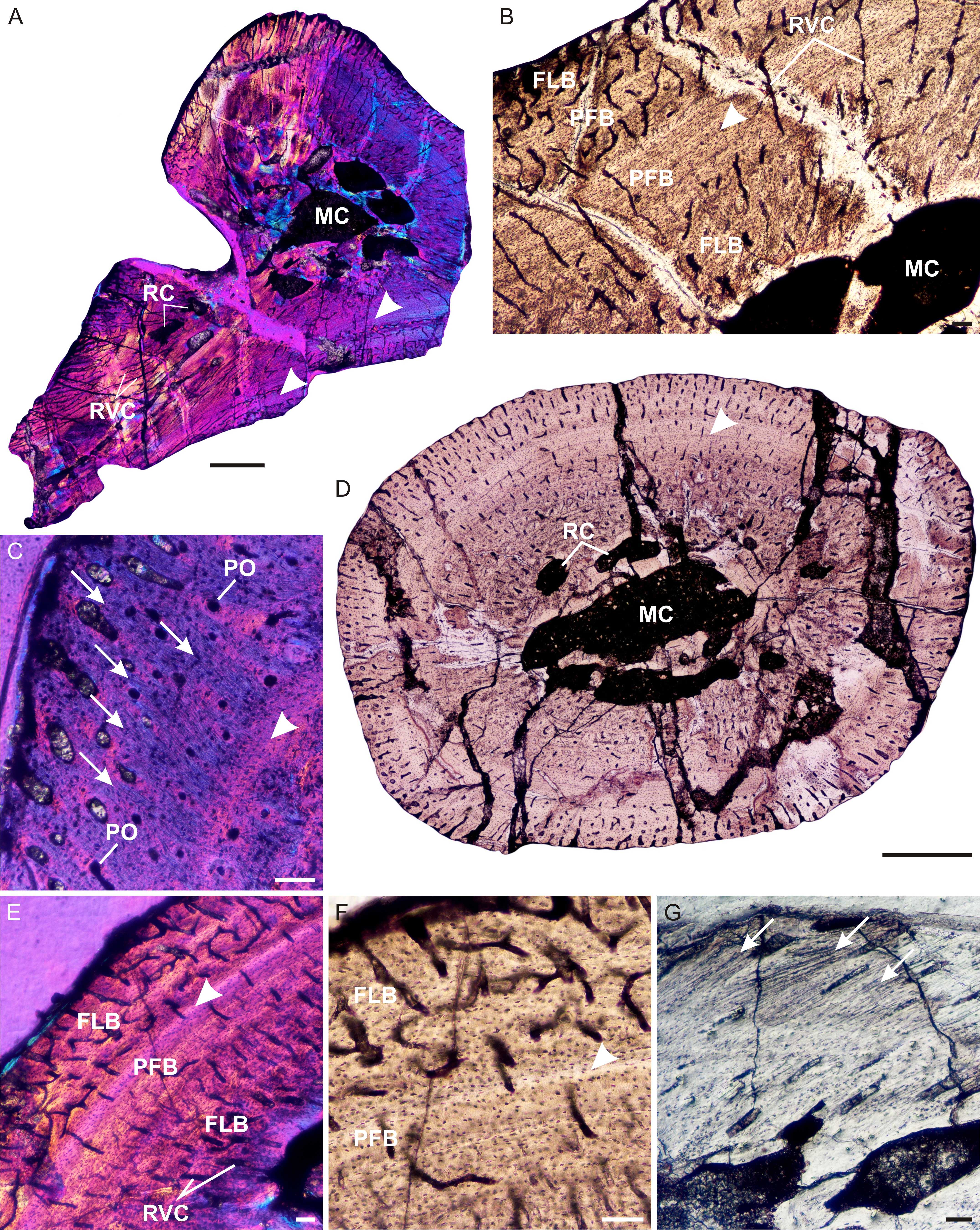 |
Lesser Trochanter
In human anatomy, the lesser trochanter is a conical, posteromedial, bony projection from the shaft of the femur. It serves as the principal insertion site of the iliopsoas muscle. Structure The lesser trochanter is a conical posteromedial projection of the shaft of the femur, projecting from the posteroinferior aspect of its junction with the femoral neck. The summit and anterior surface of the lesser trochanter are rough, whereas its posterior surface is smooth. From its apex three well-marked borders extend: * two of these are above ** a medial continuous with the lower border of the femur neck ** a lateral with the intertrochanteric crest * the inferior border is continuous with the middle division of the linea aspera Attachments The summit of the lesser trochanter gives insertion to the tendon of the psoas major muscle and the iliacus muscle; the lesser trochanter represents the principal attachment of the iliopsoas. Anatomical relations The intertrochanter ... [...More Info...] [...Related Items...] OR: [Wikipedia] [Google] [Baidu] |
 |
Femur
The femur (; : femurs or femora ), or thigh bone is the only long bone, bone in the thigh — the region of the lower limb between the hip and the knee. In many quadrupeds, four-legged animals the femur is the upper bone of the hindleg. The Femoral head, top of the femur fits into a socket in the pelvis called the hip joint, and the bottom of the femur connects to the shinbone (tibia) and kneecap (patella) to form the knee. In humans the femur is the largest and thickest bone in the body. Structure The femur is the only bone in the upper Human leg, leg. The two femurs converge Anatomical terms of location, medially toward the knees, where they articulate with the Anatomical terms of location, proximal ends of the tibiae. The angle at which the femora converge is an important factor in determining the femoral-tibial angle. In females, thicker pelvic bones cause the femora to converge more than in males. In the condition genu valgum, ''genu valgum'' (knock knee), the femurs conve ... [...More Info...] [...Related Items...] OR: [Wikipedia] [Google] [Baidu] |
|
Avulsion Fracture
An avulsion fracture is a bone fracture which occurs when a fragment of bone tears away from the main mass of bone as a result of physical trauma. This can occur at the ligament by the application of forces external to the body (such as a fall or pull) or at the tendon by a muscular contraction that is stronger than the forces holding the bone together. Generally muscular avulsion is prevented by the neurological limitations placed on muscle contractions. Highly trained Athlete, athletes can overcome this neurological inhibition of strength and produce a much greater force output capable of breaking or avulsing a bone. Types Dental avulsion dental trauma, Traumatic complete displacement of a tooth from its socket in alveolar bone. It is a serious dental emergency in which Treatment of knocked-out (avulsed) teeth, prompt management (within 20–40 minutes of injury) affects the prognosis of the tooth. Tuberosity avulsion of the 5th metatarsal file:Proximal fractures of 5th me ... [...More Info...] [...Related Items...] OR: [Wikipedia] [Google] [Baidu] |
|
|
Third Trochanter
In human anatomy, the third trochanter is a bony projection occasionally present on the proximal femur near the superior border of the gluteal tuberosity. When present, it is oblong, rounded, or conical in shape and sometimes continuous with the gluteal ridge. It generally occurs bilaterally without significant side to side dimorphism. A structure of minor importance in humans, the incidence of the third trochanter varies from 17 to 72% between ethnic groups and it is frequently reported as more common in females than in males. Structures analogous to the third trochanter are present in other mammals, including some primates, but also in horses. It is called the third trochanter in reference to the greater and lesser trochanters that are always present on the femur. Function Its function is to provide an attachment for the ascending tendon of the gluteus maximus muscle. It may function as (1) a reinforcement mechanism for the proximal femoral diaphysis in response to incre ... [...More Info...] [...Related Items...] OR: [Wikipedia] [Google] [Baidu] |
|
 |
Greater Trochanter
The greater trochanter of the femur is a large, irregular, quadrilateral eminence and a part of the skeletal system. It is directed lateral and medially and slightly posterior. In the adult it is about 2–4 cm lower than the femoral head.Standring, Susan, editor. ''Gray’s Anatomy: The Anatomical Basis of Clinical Practice''. Forty-First edition, Elsevier Limited, 2016, p. 1327. Because the pelvic outlet in the female is larger than in the male, there is a greater distance between the greater trochanters in the female. It has two surfaces and four borders. It is a traction epiphysis. Surfaces The ''lateral surface'', quadrilateral in form, is broad, rough, convex, and marked by a diagonal impression, which extends from the postero-superior to the antero-inferior angle, and serves for the insertion of the tendon of the gluteus medius. Above the impression is a triangular surface, sometimes rough for part of the tendon of the same muscle, sometimes smooth for the interp ... [...More Info...] [...Related Items...] OR: [Wikipedia] [Google] [Baidu] |
 |
Mus Musculus
The house mouse (''Mus musculus'') is a small mammal of the rodent family Muridae, characteristically having a pointed snout, large rounded ears, and a long and almost hairless tail. It is one of the most abundant species of the genus ''Mus (genus), Mus''. Although a wild animal, the house mouse has benefited significantly from associating with human habitation to the point that truly wild populations are significantly less common than the synanthropic populations near human activity. The house mouse has been domestication, domesticated as the pet or fancy mouse, and as the laboratory mouse, which is one of the most important model organisms in biology and medicine. The complete mouse reference genome was Whole genome sequencing, sequenced in 2002. Characteristics House mice have an adult body length (nose to base of tail) of and a tail length of . The weight is typically . In the wild they vary in color from grey and light brown to black (individual hairs are actually Agouti ... [...More Info...] [...Related Items...] OR: [Wikipedia] [Google] [Baidu] |
|
Pachygenelus Monus
''Pachygenelus'' is a genus of extinct cynodont. Fossils have been found from the Karoo basin in South Africa and date back to the Early Jurassic. The genus was named in 1913 on the basis of a partial lower jaw found from South Africa, with the type species being named ''P. monus''. A new species, ''P. milleri'', was named in 1983 and distinguished from the type species in possessing an accessory posterior cusp on the lower postcanines. Description ''Pachygenelus'' had both an articular- quadrate and dentary- squamosal jaw joint characteristic of ictidosaurs. Only mammals possess the dentary-squamosal articulation, while all other tetrapods possess the typical arcticular-quadrate articulation. Thus the jaw of ''Pachygenelus'' can be seen as transitional between non-mammalian synapsids and true mammals. Another feature of ''Pachygenelus'' that is shared with mammals is plesiomorphic prismatic enamel, or enamel arranged into strengthened prisms. The upper and lower tooth rows ... [...More Info...] [...Related Items...] OR: [Wikipedia] [Google] [Baidu] |
|
|
Tritylodon Langaevus
''Tritylodon'' (from the Greek for "three-cusped tooth") is an extinct genus of tritylodonts, one of the most advanced group of cynodont therapsids. They lived in the Early Jurassic and possibly Late Triassic periods along with dinosaurs. They also shared many characteristics with mammals, and were once considered mammals because of overall skeleton construction. That was changed due to them retaining the vestigial amniote jawbones and a different skull structure. Tritylodonts are now regarded as non-mammalian synapsids. Characteristics If a living ''Tritylodon'' were to be seen today, it would look a lot like a large rodent. They were about long but there is no certainty about the exact weight. Their method of chewing food, a grinding motion with the bottom teeth sliding against the top teeth, resembled that of rodents as well. The bottom teeth were much like a set of cusps and the top teeth were a set of matching grooves that matched perfectly allowing this motion. There were ... [...More Info...] [...Related Items...] OR: [Wikipedia] [Google] [Baidu] |
|
 |
Prozostrodon Brasiliensis
''Prozostrodon'' is an extinct genus of probainognathian cynodonts that was closely related to mammals. The remains were found in Brazil and are dated to the Carnian age of the Late Triassic. The holotype has an estimated skull length of , indicating that the whole animal may have been the size of a cat. The teeth were typical of advanced cynodonts, and the animal was probably a carnivore hunting reptiles and other small prey. Discovery and naming ''Prozostrodon brasiliensis'' was originally described as a species of '' Thrinaxodon'' in a 1987 paper by Mário C. Barberena, José F. Bonaparte and A. M. Sá Teixeira. The holotype (UFRGS-PV-0248-T) includes a well-preserved skull preserving the front half of the cranium, a mostly complete lower jaw and all of the teeth, but missing most of the braincase, sagittal crest and zygomatic arches. It also preserves multiple postcranial elements, including parts of the vertebral column, ribs, interclavicle, humeri, right ilium ... [...More Info...] [...Related Items...] OR: [Wikipedia] [Google] [Baidu] |
|
Node-based Taxon
Phylogenetic nomenclature is a method of nomenclature for taxon, taxa in biology that uses phylogenetics, phylogenetic definitions for taxon names as explained below. This contrasts with Biological classification, the traditional method, by which taxon names are defined by a ''Type (biology), type'', which can be a specimen or a taxon of lower Taxonomic rank, rank, and a description in words. Phylogenetic nomenclature is regulated currently by the ''PhyloCode, International Code of Phylogenetic Nomenclature'' (''PhyloCode''). Definitions Phylogenetic nomenclature associates names with clades, groups consisting of an ancestor and all its descendants. Such groups are said to be Monophyly, monophyletic. There are slightly different methods of specifying the ancestor, which are discussed below. Once the ancestor is specified, the meaning of the name is fixed: the ancestor and all organisms which are its descendants are included in the taxon named. Listing all these organisms (i.e. prov ... [...More Info...] [...Related Items...] OR: [Wikipedia] [Google] [Baidu] |
|
|
Mammaliform
Mammaliaformes ("mammalian forms") is a clade of synapsid tetrapods that includes the crown group mammals and their closest extinct relatives; the group radiated from earlier probainognathian cynodonts during the Late Triassic. It is defined as the clade originating from the most recent common ancestor of Morganucodonta and the crown group mammals; the latter is the clade originating with the most recent common ancestor of extant Monotremata, Marsupialia and Placentalia. Besides Morganucodonta and the crown group mammals, Mammaliaformes also includes Docodonta and ''Hadrocodium''. Mammaliaformes is a term of phylogenetic nomenclature. In contrast, the assignment of organisms to class Mammalia has traditionally been founded on traits and, on this basis, Mammalia is slightly more inclusive than Mammaliaformes. In particular, trait-based taxonomy generally includes ''Adelobasileus'' and ''Sinoconodon'' in Mammalia, though they fall outside the Mammaliaformes definition. These gene ... [...More Info...] [...Related Items...] OR: [Wikipedia] [Google] [Baidu] |
|
|
Mammal
A mammal () is a vertebrate animal of the Class (biology), class Mammalia (). Mammals are characterised by the presence of milk-producing mammary glands for feeding their young, a broad neocortex region of the brain, fur or hair, and three Evolution of mammalian auditory ossicles, middle ear bones. These characteristics distinguish them from reptiles and birds, from which their ancestors Genetic divergence, diverged in the Carboniferous Period over 300 million years ago. Around 6,640 Neontology#Extant taxon, extant species of mammals have been described and divided into 27 Order (biology), orders. The study of mammals is called mammalogy. The largest orders of mammals, by number of species, are the rodents, bats, and eulipotyphlans (including hedgehogs, Mole (animal), moles and shrews). The next three are the primates (including humans, monkeys and lemurs), the Artiodactyl, even-toed ungulates (including pigs, camels, and whales), and the Carnivora (including Felidae, ... [...More Info...] [...Related Items...] OR: [Wikipedia] [Google] [Baidu] |
|
|
Cynodont
Cynodontia () is a clade of eutheriodont therapsids that first appeared in the Late Permian (approximately 260 Megaannum, mya), and extensively diversified after the Permian–Triassic extinction event. Mammals are cynodonts, as are their extinct ancestors and close relatives (Mammaliaformes), having evolved from advanced probainognathian cynodonts during the Late Triassic. Non-mammalian cynodonts occupied a variety of ecological niches, both as carnivores and as herbivores. Following the emergence of mammals, most other cynodont lines went extinct, with the last known non-mammaliaform cynodont group, the Tritylodontidae, having its youngest records in the Early Cretaceous. Description Early cynodonts have many of the skeletal characteristics of mammals. The teeth were fully differentiated and the braincase bulged at the back of the head. Outside of some Crown group, crown-group mammals (notably the therians), all cynodonts probably laid eggs. The temporal fenestrae#Fenestra ... [...More Info...] [...Related Items...] OR: [Wikipedia] [Google] [Baidu] |